Working papers:
“Cities and the Sea Level”, with Guy Michaels (LSE) and Yatang Lin (Hong Kong University of Science and Technology). Latest version available here.
Conditionally accepted at the Journal of Urban Economics (March 2024).
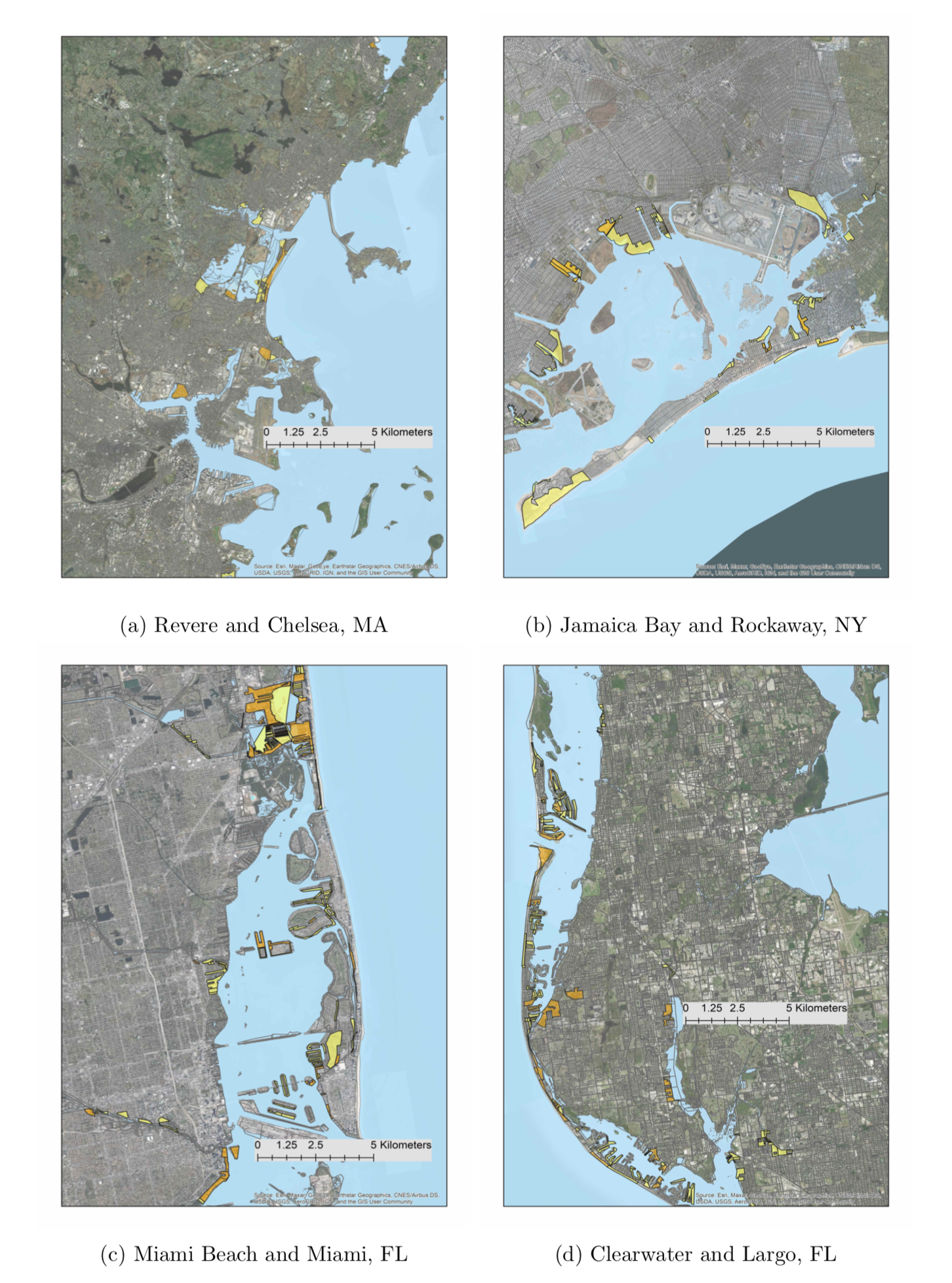
Abstract: Construction on low elevation coastal zones is risky for both residents and taxpayers who bail them out. To investigate this construction, we analyze spatially disaggregated data covering the entire US Atlantic and Gulf coasts. We find that the 1990 housing stock reflects historical avoidance of locations prone to sea level rise (SLR) and flooding, but net new construction from 1990-2010 was similar in SLR-prone locations and safer ones; and within densely built coastal areas, net new construction was higher in SLR-prone locations. These findings are difficult to rationalize as mere products of moral hazard or imperfect information, suggesting that people build on risky locations to benefit from nearby urban agglomerations. To explain our findings, we develop a simple model of a monocentric coastal city, which we use to explore the consequences of sea level rise. This model helps explain cities’ role in expanding flood risks, and how future sea level rise may reshape coastal cities, creating significant challenges for policymakers.
“Estimating the flood discount: Evidence from a one-off national information shock”, with Tom Gillespie (University of Galway) and Ronan Lyons (TCD). Latest version available here.
Revisions invited at Environmental and Resource Economics (February 2024).
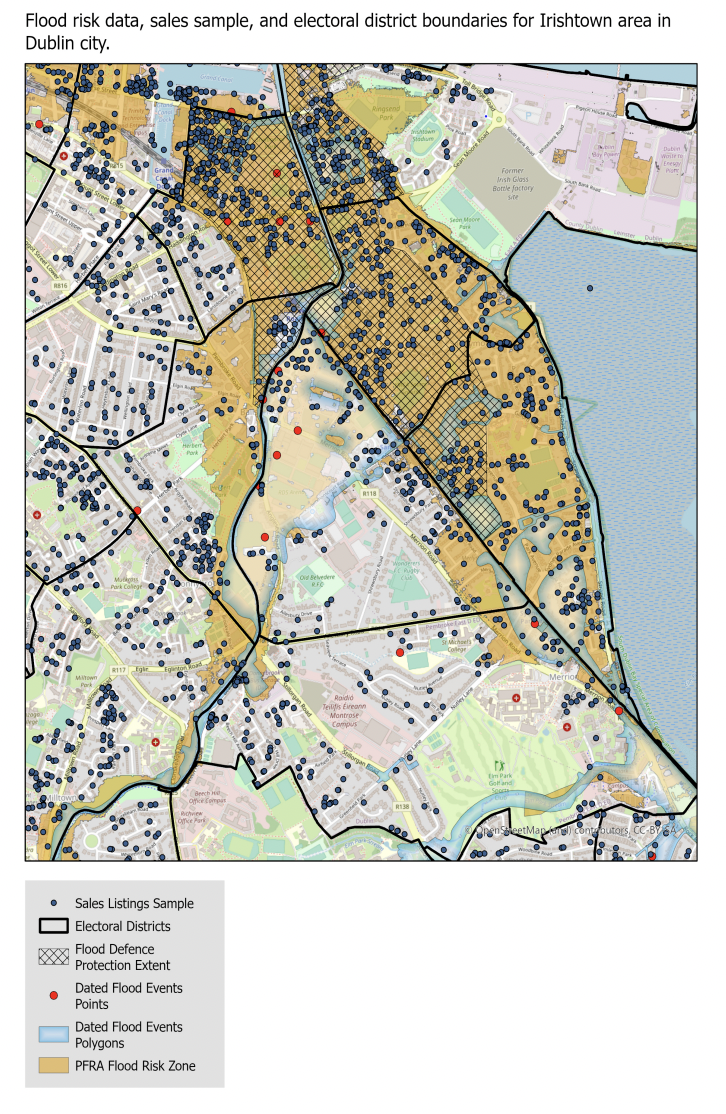
Abstract: Flood risk is the most pervasive and costly natural hazard globally. With significant increases in flood risk expected over coming decades, future exposure to flood risk and associated costs will depend heavily on how private consumption decisions respond to new information about risk. We exploit a one-off national information treatment in the form of the release in 2011, for the first time, of detailed flood risk maps for Ireland, to test the effect of new information about flood risk on housing prices across an entire national housing market. We combine rich dwelling-level information on over 475,000 dwellings for the period 2006-2015 with detailed official data relating to flood risk, events and defences. Our core finding is that information matters. The price of housing responded dramatically to the release of flood risk maps at the end of 2011, with the emergence of a 4% price discount for dwellings at risk of flooding.
“Will increased remote working reduce emissions from commuting? Evidence from the pandemic”, with Alma McCarthy, Eoghan Clifford, Anna Farrell, Joseph Mee and Ronan Cooney (University of Galway).
Under review (August 2023).
Abstract: Context: Remote working (RW) has been cited as a potentially quick and low cost way of cutting greenhouse gas (GHG) emissions. Contribution: Our paper reports findings from a large-scale remote working survey (n=3,192) of Irish workers on their actual commuting and transport mode patterns pre-pandemic and during COVID-19, as well as preferences for commuting post-COVID-19. Findings: Our analysis shows that substantial emissions reductions from remote working are possible. We estimate a 59-61% reduction in commuting emissions if workers’ RW preferences are facilitated. However, we also find evidence of potentially significant rebound effects – for example as a result of people trading off less frequent commuting against longer distances (i.e., living further from work). Policy implications: Our findings underline the need for complementary policies to ensure the potential gains from remote working are realised and unintended negative effects kept to a minimum.
“Getting by with a Little Help from my Friends – the Role of Social Capital in Responding to Shocks”, with Xurxo Alonso Vazquez, Una Murray (both University of Galway) and Jenny Swatton (Concern Worldwide)
Submitted (November 2023).
“The far-reaching distributional effects of global warming: Evidence from half a century of climate and inequality data”, with David Castells-Quintana (UAB). Latest version available here.
Submitted (January 2024).
Abstract: Climate change is already impacting several development outcomes, including economic growth, human health and mortality, agricultural productivity and even conflict. Moreover, the impact of climate change is expected to be unevenly distributed across locations and population groups. In particular, the worst effects of climate change are expected to be felt in low-income countries. Similarly, within countries, the most vulnerable to these effects are typically low-income regions and households. While the literature to date has provided evidence of the between-countries inequality- increasing effect of global warming, evidence for inequality within countries remains limited. In this paper, we empirically explore the connection between climate change and long-run distributional dynamics within countries. To do so, we first build a global panel dataset combining gridded data on climate variables with gridded population data, and country-level data on a range of inequality measures and development outcomes. We use these data to test climate effects on several dimensions of inequality, including the (interpersonal) distribution of income, using traditional Gini coefficients, indices of concentration of both income and wealth, proxies of inequality in the spatial distribution of economic activity within countries, and measures of inequality in life expectancy. We complement our country-level analysis with an analysis at the subnational level for selected countries (US, Russia and Spain). Our evidence shows a clear positive and statistically significant relationship between higher temperatures and increases in different measures and dimensions of inequality, both at the country and subnational level. The role of higher temperatures is robust to a wide range of controls, different specifications and estimation techniques.
Work in progress:
“Weather shocks and household impacts: Nigeria’s 2012 floods”, with Mook Bangalore (LSE).
Recently published:
“Temperature, Morbidity and Behaviour in Milder Climates”, with Garreth Gibney and John Cullinan (both University of Galway).
Previously circulated as a working paper with the title “Climate Change, Extreme Temperatures, and Morbidity: Evidence from Hospital Attendances in England“.
Published at Economic Modelling (January 2023). Preprint available here.
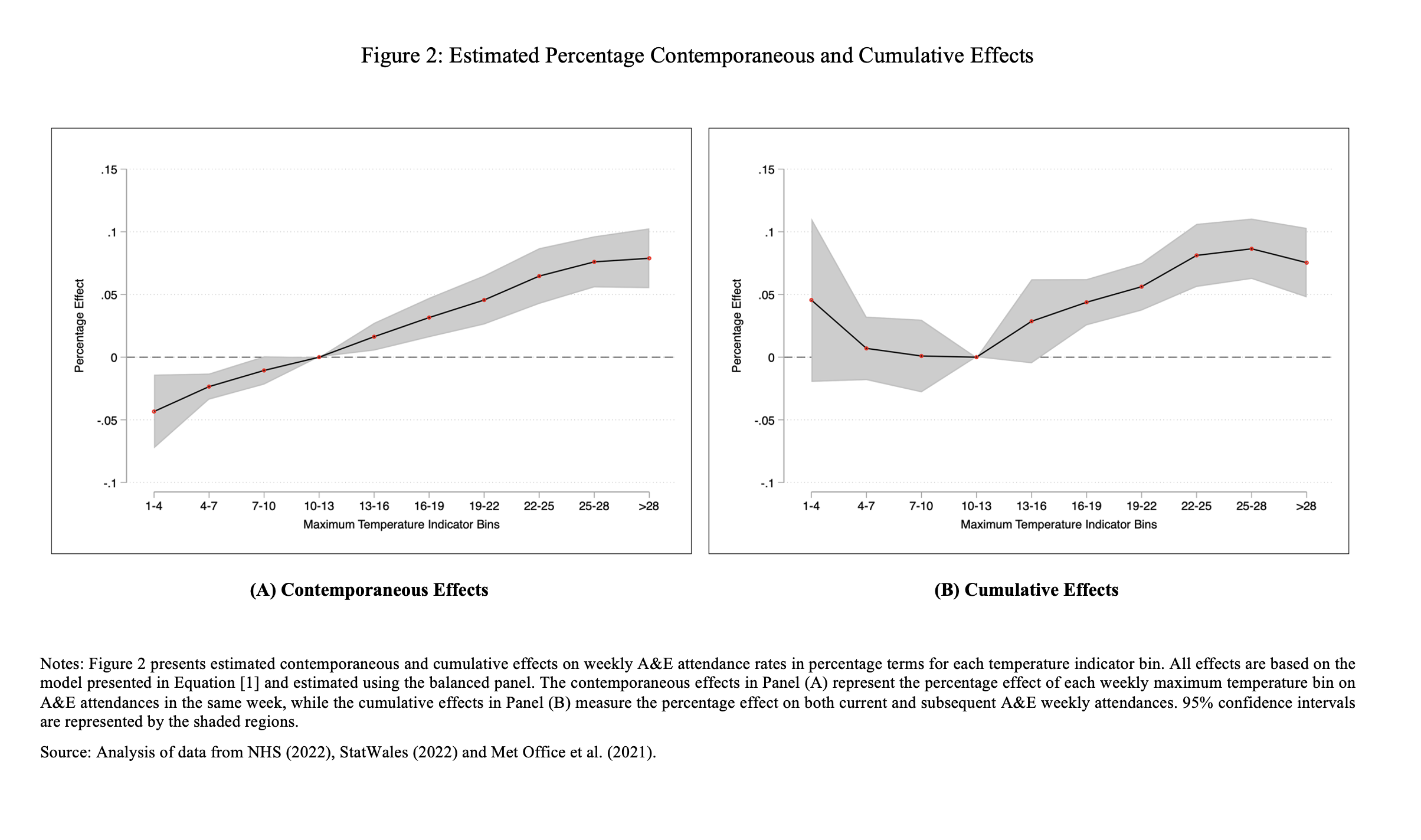
Abstract: Climate change is expected to lead to increases in extreme weather events and several studies have considered the effects of temperature on human health, mostly in hotter countries. We extend this literature by modelling the relationship between temperature and morbidity in a country with a temperate maritime climate and by considering the role of behavioural responses. Using weekly data on accident and emergency (A&E) attendances for 429 hospitals across England from 2010-2015, we find that while cold weather is associated with an initial reduction in A&E attendances, this appears to be a result of postponements to subsequent weeks. However, for hotter temperatures, we find evidence of substantial increases in overall attendances that are not offset by subsequent reductions. Our results show clear effects of temperature on morbidity even in relatively milder climates with implications for future healthcare demand and estimates of the overall costs of climate change.
“Climate change and the spatial concentration of population”, with David Castells-Quintana (UAB) and Melanie Krause (Leipzig).
Book chapter based on previously published research, in particular Castells-Quintana et al. (2021, JEG) “The urbanising force of global warming”.
Published in: The Palgrave Handbook of Global Sustainability (September 2022). Available here.
Abstract: This chapter studies the relationship between climate change and the spatial distribution of population and economic activity within countries. First, the chapter reviews the literature on the spatial effects of climate change. Second, the chapter takes a look at global climatic trends and their connection with the spatial distribution of population within countries. To do so, climatic and census data for the period 1950–2015 are used and merged with satellite data on built-up areas and light intensity at night for the 1990–2015 period. The analysis of the data shows a significant role of climate change on the evolution of the spatial distribution of population. In particular, the data reveal that deteriorating climatic conditions are associated with more urbanization and larger and more fragmented cities.
“On the Frontlines: An exploratory analysis of unequal exposure to air pollution and COVID-19 in the United States”, with Daniel Vila (University of Galway and STOFF2 GmbH).
Published at the International Journal for Equity in Health (August 2022). Available (open access) here.
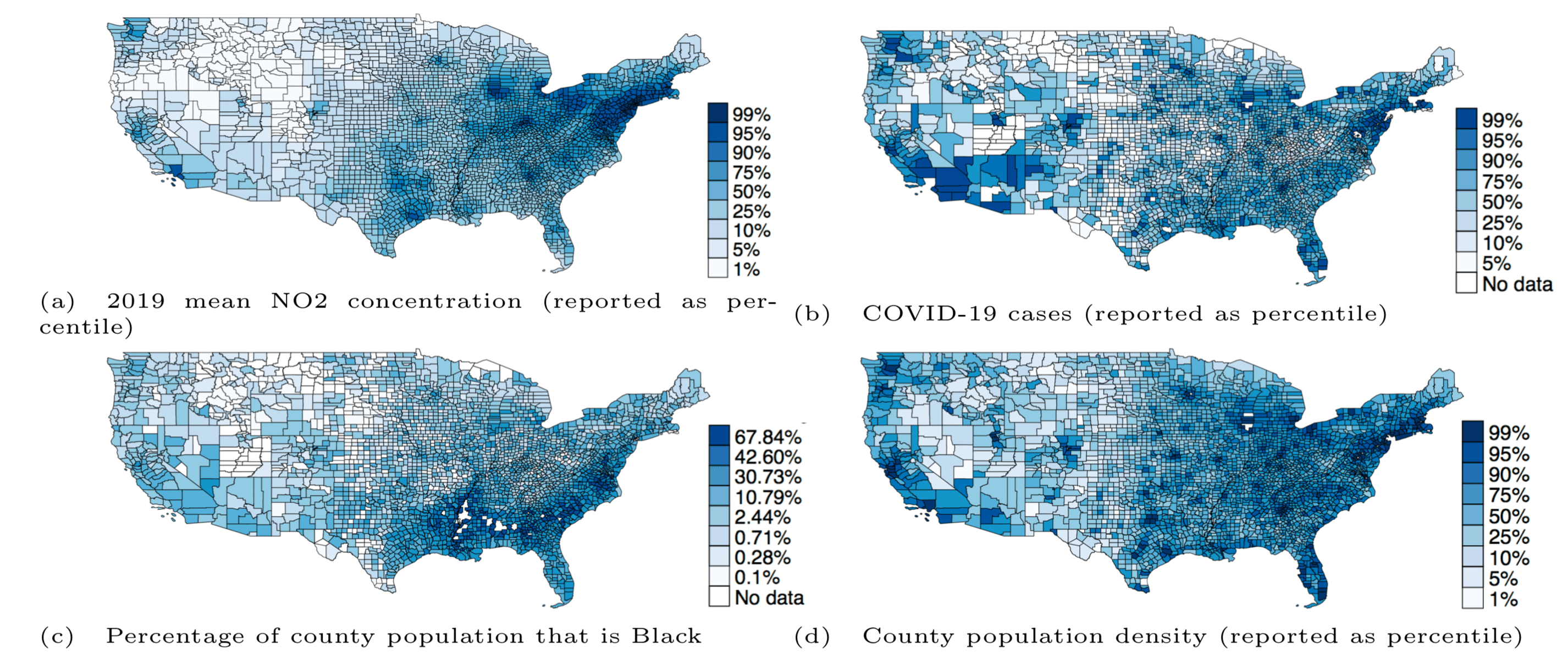
Abstract: Recent literature has suggested a link between poor air quality and worse COVID-19 outcomes. In the United States, this link is particularly noteworthy because of residential sorting along ethnic lines within the US population; minorities are disproportionately exposed to health hazards, including air pollution. The impacts of the COVID-19 pandemic have also been disproportionately concentrated amongst minorities. We explore the association between air quality and COVID-19 outcomes, using county level data for the United States from the first wave of the pandemic in 2020, and test whether exposure to more polluted air can account for some of the observed disparities in COVID-19 outcomes among minorities.
“Population displacement and urban conflict: Global evidence from more than 3,300 flood events”, with David Castells-Quintana (UAB), and Maria del Pilar Lopez-Uribe (Universidad de los Andes, Colombia and LSE).
Published at the Journal of Development Economics (June 2022). Available (open access) here.
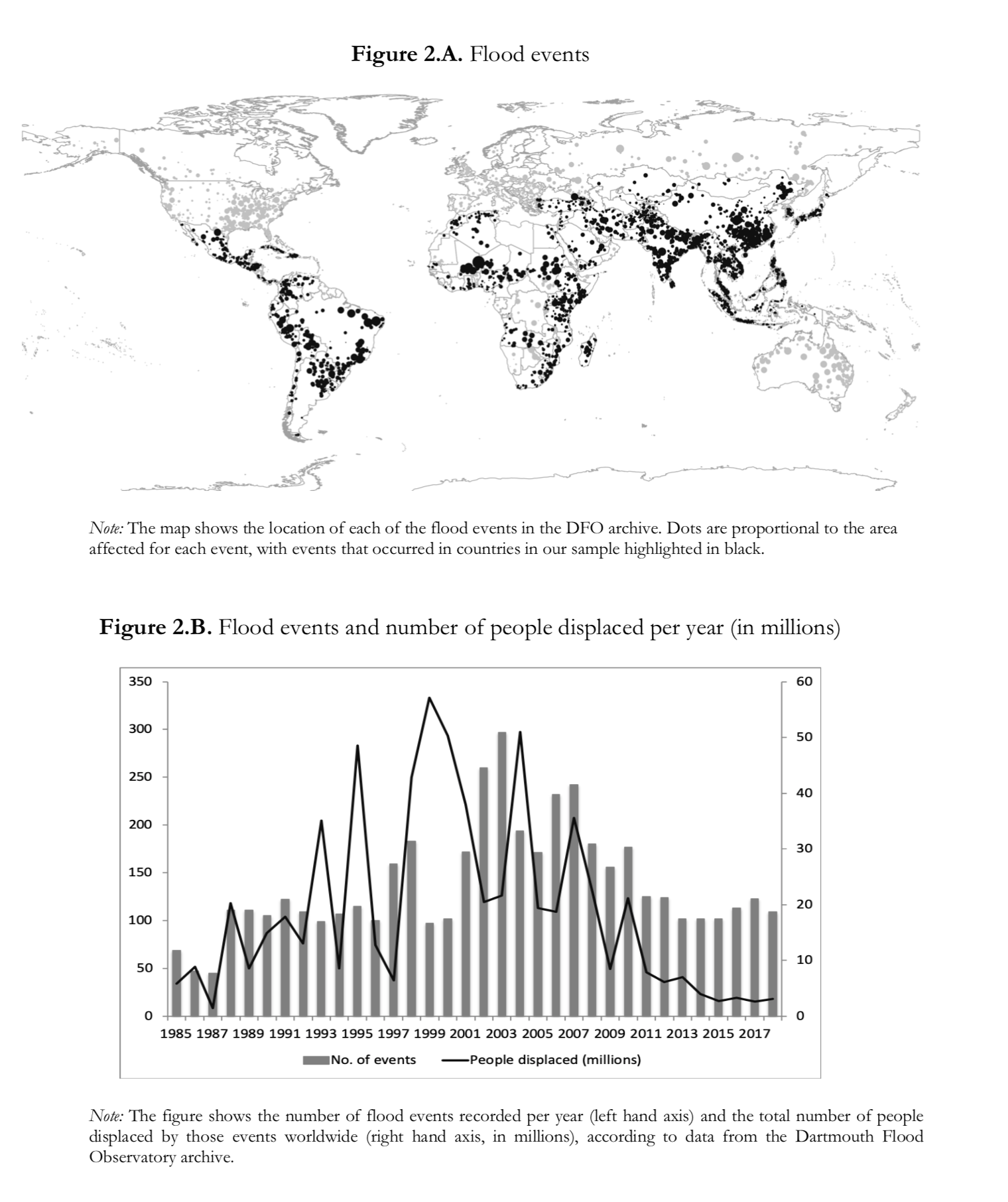
Abstract: In this paper, we study the effect of displacement of population into cities on urban conflict in developing countries. To do so, we construct a novel measure of exposure to floods, using data on more than 3,300 flood events worldwide, as an exogenous source of population displacement. We combine this with city level observations of thousands of urban social disorder events over the period 1985-2015. Exposure to floods is found to be associated with higher intensity of urban social disorder. Our evidence suggests that the effects of floods on urban disorder occur in part through the displacement of population into large cities. Exploring the information on urban disorder events in more detail, we find that the association between city growth and urban disorder is strongest for events related to public service provision, prices and wages.
“Global exposure to flood risk and poverty”.
Invited News and Views article for Nature Communications (accepted for publication May 2022). Available here.
Abstract: Flooding is a pervasive natural hazard, with new research demonstrating that more than one in five people around the world live in areas directly exposed to 1-in-100 year flood risk. Exposure to such flood risk is particularly concentrated amongst lower income households worldwide.
“The urbanising force of global warming: The role of climate change in the spatial distribution of population“, with David Castells-Quintana (UAB), and Melanie Krause (Hamburg), 2021.
Published at the Journal of Economic Geography.
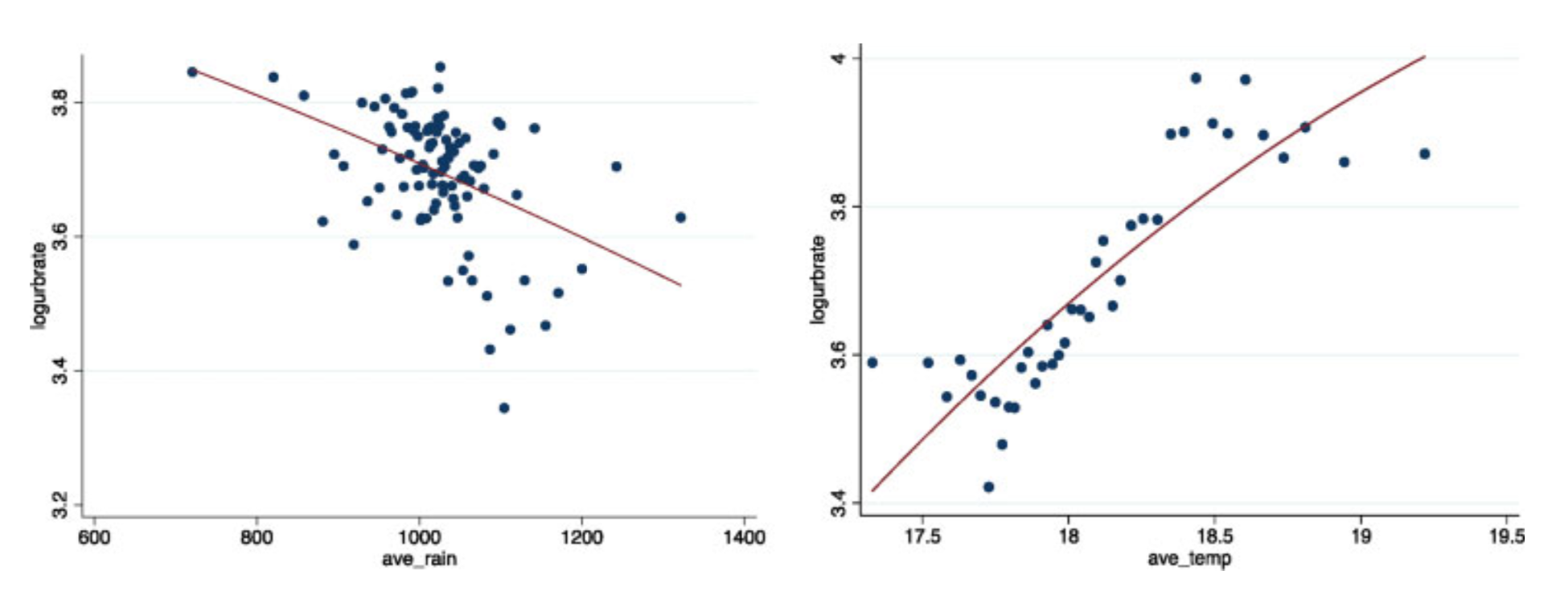
Abstract: We study the relationship between changes in weather patterns and the spatial distribution of population and economic activity within countries. Our unique global dataset combines climatic and census data for the period 1950-2015 with satellite data on built-up areas, and light intensity at night for the 1990-2015 period. We establish a global non-linear effect of climate on urbanisation. In particular, we find that deteriorating climatic conditions are associated with more urbanisation. This happens across the whole urban structure, with urbanisation increasing in both smaller and larger cities. But we also find that weather variation can alter the national urban structure, including the pattern of urban concentration, as well as the size, density and spatial structure of large cities.
“A discrete choice experiment exploring farmer preferences for insurance against extreme weather events”, with Edel Doherty, Sinead Mellett, Danny Norton, Denis O’Hora and Mary Ryan, 2021.
Published at the Journal of Environmental Management.
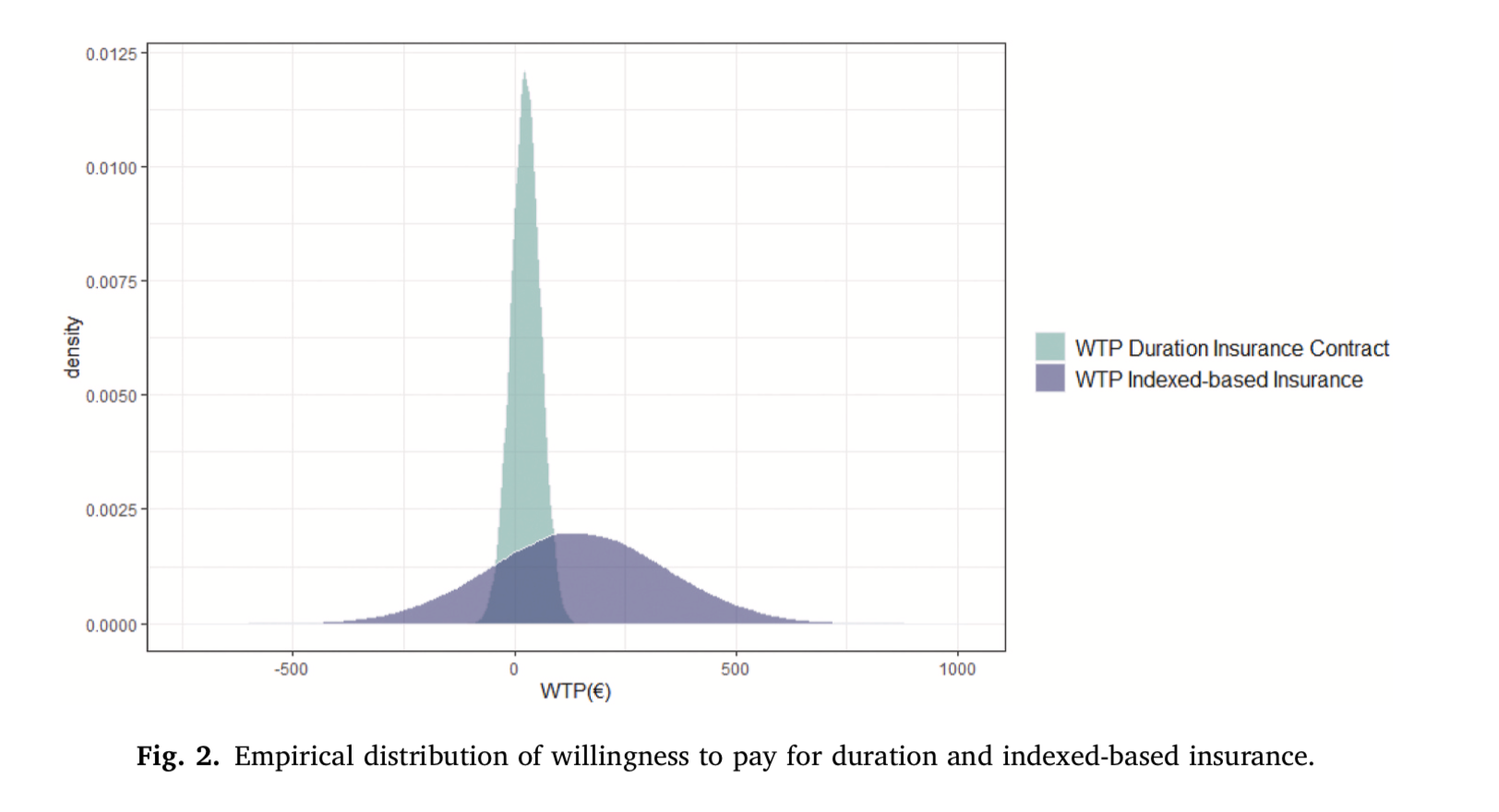
Abstract: Agriculture represents one of the most vulnerable sectors to extreme weather events that are projected to increase with climate change. Insurance has been advocated as a more efficient means to ensure financial security to farmers, than post-disaster aid for damages. A potential drawback of insurance however, is that unless carefully designed it could dis-incentivise farmers to engage in wider farm adaptation measures or lead to more risk-taking behaviour. This paper analyses the attractiveness of a publicly-backed climate risk insurance offering to farmers and explores their preferences for elements of insurance schemes that do not negatively affect incentives for wider farm adaptation. Specifically, a discrete choice experiment is used to reveal Irish farmers’ preferences for multi-annual insurance contracts and weather-indexed versus traditional indemnity insurance and cost. Results indicate that a large majority of farmers are willing to buy publicly-backed insurance for protection from extreme weather events. Younger farmers, farmers who currently have farm insurance, farmers from certain geographical locations and farmers who have been previously affected by extreme weather events are more likely to buy insurance. With respect to the design of insurance schemes, farmers prefer multi-annual coverage versus annual renewal. They also prefer indexed-insurance and have a strong preference for cheaper coverage. Despite the important role that insurance could play in protecting farms financially from damage caused by extreme weather events, few studies have examined preference for weather-indexed insurance within a European context. New evidence on farmer preferences and intended behaviours is therefore critical to inform policy in this area.
“Flooded Cities”, with Adriana Kocornik-Mina, Guy Michaels and Ferdinand Rauch, 2020.
Published at the American Economic Journal: Applied Economics.
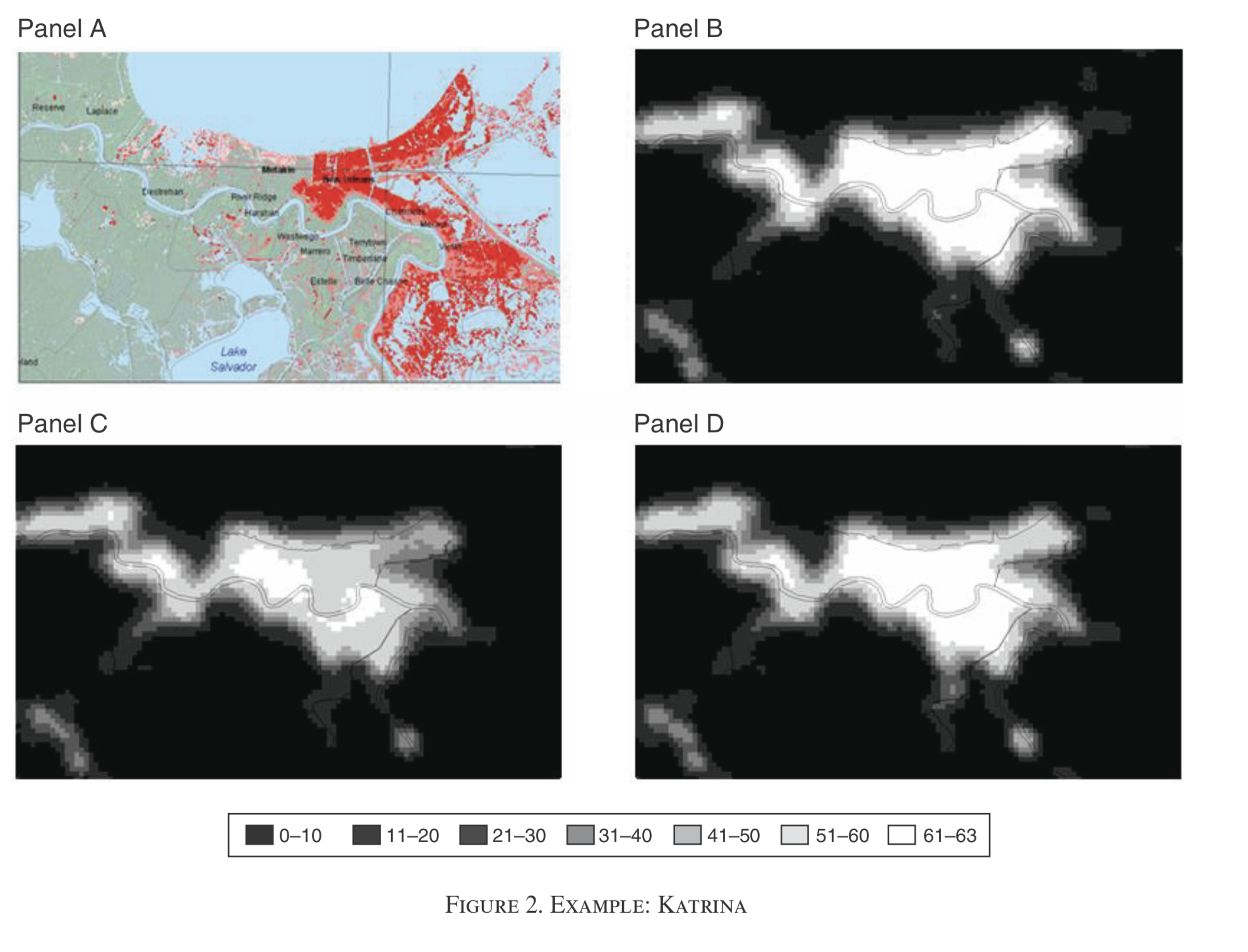
Abstract: Does economic activity move away from areas that are at high risk of recurring shocks? We examine this question in the context of floods, which displaced more than 650 million people worldwide in the last 35 years. We study large urban floods using spatially detailed inundation maps and night lights data spanning the globe’s cities. We find that low-elevation urban areas are flooded more frequently, and yet they concentrate more economic activity per square kilometer. When cities are flooded, low-elevation areas recover as rapidly as those higher up. With the exception of recently populated urban areas, we find little permanent movement of economic activity in response to floods.